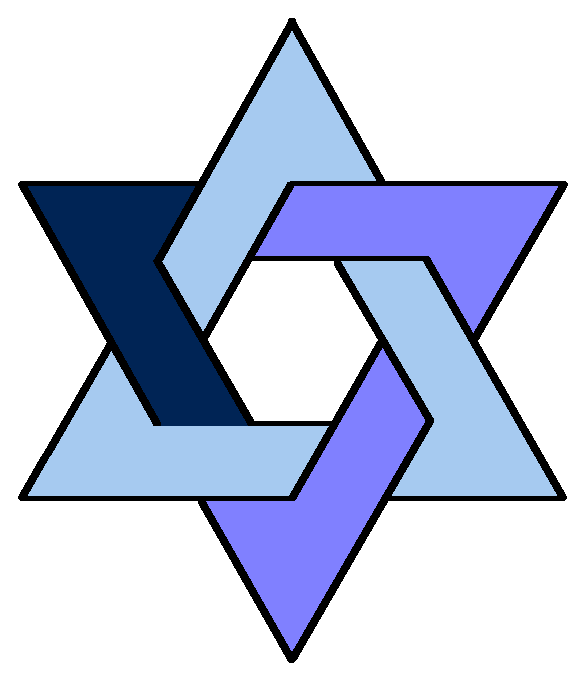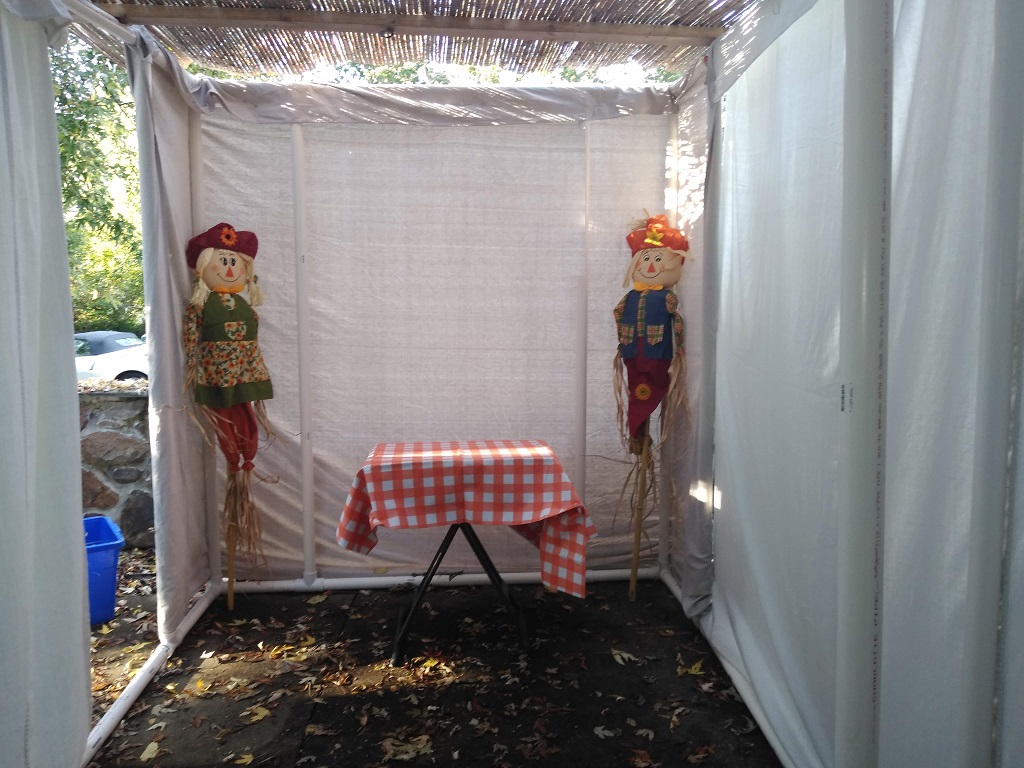
Level: Basic
...In the seventh month, on the tenth day of the month, you shall afflict your souls, and you shall not do any work ... For on that day he shall provide atonement for you to cleanse you from all your sins before the L-RD. (Leviticus 16:29-30)
Yom Kippur is probably the most important holiday of the Jewish year. Many Jews who do not observe any other Jewish custom will refrain from work, fast and/or attend synagogue services on this day. Yom Kippur occurs on the 10th day of Tishri. The holiday is instituted at Leviticus 16:29-30.
The name "Yom Kippur" means "Day of Atonement," and that pretty much explains what the holiday is. It is a day set aside to "afflict the soul," to atone for the sins of the past year. In Days of Awe, I mentioned the "books" in which G-d inscribes all of our names. On Yom Kippur, the judgment entered in these books is sealed. This day is, essentially, your last appeal, your last chance to change the judgment, to demonstrate your repentance and make amends.
As I noted in Days of Awe, Yom Kippur atones only for sins between man and G-d, not for sins against another person. To atone for sins against another person, you must first seek reconciliation with that person, righting the wrongs you committed against them if possible. That must all be done before Yom Kippur.
Yom Kippur is a complete Sabbath; no work can be performed on that day. It is well-known that you are supposed to refrain from eating and drinking (even water) on Yom Kippur. It is a complete, 25-hour fast beginning before sunset on the evening before Yom Kippur and ending after nightfall on the day of Yom Kippur. The Talmud also specifies additional restrictions that are less well-known: washing and bathing, anointing one's body (with cosmetics, deodorants, etc.), wearing leather shoes (Orthodox Jews routinely wear canvas sneakers, flip flops or even Crocs under their dress clothes on Yom Kippur), and engaging in sexual relations are all prohibited on Yom Kippur.
As always, any of these restrictions can be lifted where a threat to life or health is involved. In fact, children under the age of nine and women in childbirth (from the time labor begins until three days after birth) are not permitted to fast, even if they want to. Older children and women from the third to the seventh day after childbirth are permitted to fast, but are permitted to break the fast if they feel the need to do so. People with other illnesses should consult a physician and a rabbi for advice.
Most of the holiday is spent in the synagogue, in prayer. In Orthodox synagogues, services begin early in the morning (8 or 9 AM) and continue until about 3 PM. People then usually go home for an afternoon nap and return around 5 or 6 PM for the afternoon and evening services, which continue until nightfall. The services end at nightfall, with the blowing of a tekiah gedolah, a long blast on the shofar. See Rosh Hashanah for more about the shofar and its characteristic blasts. This is often followed by some triumpant singing and dancing around the synagogue (not formal party dancing; just everyone dancing around in a circle).
It is customary to wear white on the holiday, which symbolizes purity and calls to mind the promise that our sins shall be made as white as snow (Is. 1:18). Some people wear a kittel, the white robe in which the dead are buried (the rabbi usually wears this but some others do as well).
See also Jewish Liturgy generally.
The liturgy for Yom Kippur is much more extensive than for any other day of the year. Liturgical additions are so far-reaching that there is a separate, special prayer book for Yom Kippur and Rosh Hashanah. This prayer book is called the machzor, which means cycle or series. This word used to be used for any comprehensive prayer book but it has specifically been used for the High Holiday prayer book for centuries.
The evening service that begins Yom Kippur is commonly known as Kol Nidre, named for the prayer that begins the service. "Kol nidre" means "all vows," and in this prayer, we ask G-d to annul all personal vows we may make in the next year. It refers only to vows between the person making them and G-d, such as "If I pass this test, I'll pray every day for the next 6 months!" The YouTube recording is the traditional melody (though I don't usually hear it with backup singers).
This prayer has often been held up by anti-Semites as proof that Jews are untrustworthy (we do not keep our vows), and for this reason the Reform movement removed it from the liturgy for a while. In fact, the reverse is true: we make this prayer because we take vows so seriously that we consider ourselves bound even if we make the vows under duress or in times of stress when we are not thinking straight. This prayer gave comfort to those who were converted to Christianity by torture and threats of expulsion in various awful times, yet felt unable to break their vow to follow Christianity. In recognition of this history, the Reform movement restored this prayer to its liturgy.
There are many additions to the regular liturgy (there would have to be, to get such a long service <grin>). Perhaps the most important addition is the confession of the sins of the community, which is inserted into the Shemoneh Esrei (Amidah) prayer. Note that all sins are confessed in the plural (we have done this, we have done that), emphasizing communal responsibility for sins.
There are two basic parts of this confession: Ashamnu, a shorter, more general list (we have been treasonable, we have been aggressive, we have been slanderous...), and Al Cheit, a longer and more specific list (for the sin we sinned before you forcibly or willingly, and for the sin we sinned before you by acting callously...) Frequent petitions for forgiveness are interspersed in these prayers. There's also a catch-all confession: "Forgive us the breach of positive commands and negative commands, whether or not they involve an act, whether or not they are known to us."
It is interesting to note that these confessions do not specifically address the kinds of ritual sins that some people think are the be-all-and-end-all of Judaism. There is no "for the sin we have sinned before you by eating pork, and for the sin we have sinned against you by driving on Shabbat" (though obviously these are implicitly included in the catch-all). The vast majority of the sins enumerated involve mistreatment of other people, most of them by speech (offensive speech, scoffing, slander, talebearing, and swearing falsely, to name a few). These all come into the category of sin known as "lashon ha-ra" (lit: the evil tongue), which is considered a very serious sin in Judaism.
The concluding service of Yom Kippur, known as Ne'ilah, is one unique to the day. It usually runs about 1 hour long. The ark (a cabinet where the scrolls of the Torah are kept) is kept open throughout this service, thus you are expected to stand throughout the service. There is a tone of desperation in the prayers of this service. The service is sometimes referred to as the closing of the gates; think of it as the "last chance" to get in a good word before the holiday ends. The service ends with a very long blast of the shofar. See Rosh Hashanah for more about the shofar and its characteristic blasts. As the blast ends, there is a great sense of relief, often followed by joyous singing. Traditional synagogues immediately follow this with the evening prayer service for the next day, a demonstration that we are dedicated to living a righteous life in the coming year.
After Yom Kippur, one should begin preparing for the next holiday, Sukkot, which begins five days later.
Yom Kippur will occur on the following days of the secular calendar:
For additional holiday dates, see Links to Jewish Calendars.
 Fasting Tips
Fasting Tips Next Holiday: Sukkot
Next Holiday: Sukkot Last Holiday: Rosh Hashanah
Last Holiday: Rosh Hashanah Days of Awe
Days of Awe